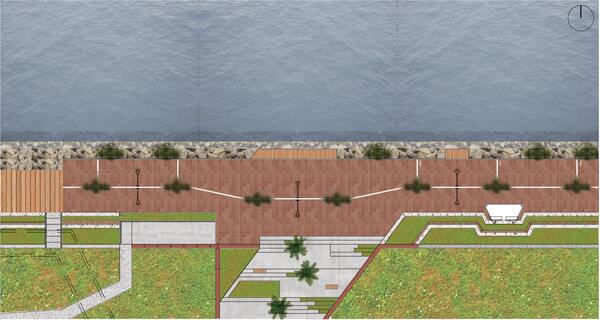My thesis project explores public space in Hong Kong and the conflict between government policies and varies stakeholders. Land privatisation and the lack of public green space has been an issue for over a decade which caused a lot of negative impact to the society such as social inequality and health issue. The proejct aims to convert unused land in Hong Kong from land reclamation to a sloping landscape that able to recover the appearance of the mountain behind. Not only the landscape were enhanced by vegetation, it provides disable access and varies recreational space that bring people with different interest together, making it a more culturally diverse community.
In terms of the design, the waterfront is designed to be flooded by rain and rising sea level in a time frame of 50-70 years. It offered spacious path for jogging, dog-walking and walking with a continuous terrazzo bench made from demolition waste on the side for rest and other social interaction. The material used in the waterfront are mainly biodegradable in adapting rising sea level in 50 years.
The waterfront are connected to the wider landscape through a central staircase plaza that provides gardens, seatings and space for social activities. It will also act as a viewing deck once the waterfront has been flooded in the future. The landscape park are connected to the existing hiking trail through a steel foot bridge that blends in with the vegetation by green finishes. The bridge are accessable for all people and it offered viewing deck and bench along the journey.


